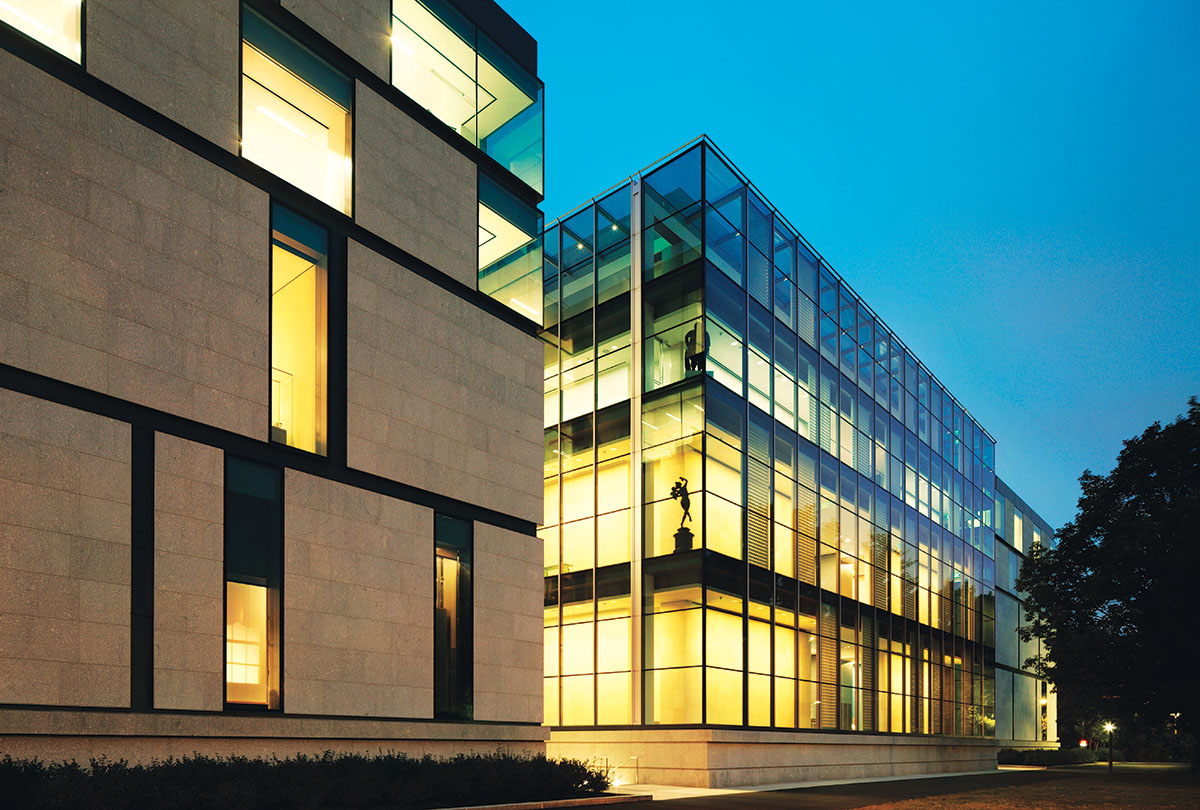The Making of a Masterpiece
Over the past decade, the Museum of Fine Arts has raised more than $500 million as part of an ambitious plan to reinvent itself. This month, the public finally gets to see what a half-billion dollars gets you these days.

Photo by Brian Blanco/Reuters/Landov
Talk about an extreme makeover: In 1999, the MFA came up with a master plan to transform itself from a revered but intimidating archive of classic works to a user-friendly home for all art lovers. Entrances would be restored after years of neglect, and the total building area would grow by more than 25 percent — thanks mainly to the construction of a massive new addition, the Arts of the Americas Wing. The campaign would end up being the most ambitious effort in the museum’s history.
[sidebar]“I felt that having this wing would be particularly significant here in Boston, the cradle of America,” says the MFA’s director, Malcolm Rogers. “You can tell so much about American history, and see how America has changed, through its arts.”
All it would take was a mere $504 million — or about as much as it cost to build Gillette Stadium and Newton North High School. Combined. Fortunately, the fundraising campaign benefited from some fortuitous timing: It concluded in September 2008, a few weeks before the economy officially tanked.
On November 20 Bostonians will finally get to see what all the fuss is about. Even better, they’ll get to see it for free that day. What they’ll find are 53 new galleries totaling more than 50,000 square feet. In fact, the museum has been able to double the amount of American artwork on view to include many new acquisitions and pieces that have been mothballed for decades.
The new wing was designed by the London firm Foster + Partners, best known for topping Berlin’s Reichstag with a glass dome. They’ve put the same emphasis on transparency with the MFA: The building’s glass walls help break down the barrier between the salon and the sidewalk — a dramatic departure from the museum’s once-cloistered image.
As Rogers puts it: “If you look in from outside and see people with strollers or in regular clothing, you think, ‘Oh, I don’t need to wear black tie to go to the MFA.’”
BY THE NUMBERS
In just seven years, the MFA raised an unprecedented (and jaw-dropping) amount of money for its “Building the New MFA” campaign. Where all that cash came from — and where it went.
THE BREAKDOWN
$504 million was raised from 2001 to 2008.
$41 million of the total donations came from foundations.
$35 million from corporations.
$11 million from government grants.
$2.1 million from museum staff.
$415 million from individuals. Two thirds, or $268 million, of the $415 million came from just 92 people, the MFA’s trustees.
THE GOODS
$345 million went to construction (including the new Arts of the Americas Wing, the restored Fenway and Huntington Avenue entrances, and an expansive central courtyard that boasts a 63-foot-high glass ceiling).
$47 million to annual operating expenses (including staff payroll, maintenance, and programming).
$112 million to the museum’s endowment.
But that’s not all… $214 million more in art and cash has been donated through the separate (and ongoing) Gifts of Art campaign.
THE BIG SPENDERS
$50 million came from a single anonymous donor.
$25 million (at least) each from individual donations by George D. and Margo Behrakis, Joyce and Edward Linde, and the Carl and Ruth Shapiro Family Foundation.
$15 million from Bank of America, which earned the company naming rights to the MFA’s Huntington Avenue plaza.
$10 million (at least) each from individual donations by Barbara and Ted Alfond, the Estate of Roberta E. Logie, and two anonymous donors.
$10 million from a donation by State Street Corporation, which earned the company naming rights to the MFA’s Fenway entrance.
$5 million from the Calderwood Charitable Foundation.
WHAT’S IN A NAME?
Nearly every piece of real estate in the new wing — the galleries, the courtyard, even a stairway — is named after someone (someone who ponied up at least $1 million for the privilege). Here, some of the people who will now and forever be associated with the MFA.
GEORGE PUTNAM
Who he is: Former chairman of Putnam Investments; also a major benefactor of the Peabody Essex Museum. His father, George Putnam Sr., founded the eponymous company (and married Amelia Earhart). Find his name on: Ship Models and Maritime Arts gallery, lower ground level.
PENNY AND JEFFREY VINIK
Who they are: After taking over Fidelity’s Magellan Fund from Peter Lynch in the early ’90s, Jeffrey Vinik founded the hedge fund Vinik Asset Management. His own portfolio now includes the NHL’s Tampa Bay Lightning. Find their names on: The Salon: Americans Abroad in the 19th Century, level two.
SAUNDRA B. AND WILLIAM H. LANE
Who they are: William, a Leominster-based plastics manufacturer, and his wife began collecting art in 1951, eventually amassing works by such masters as Georgia O’Keeffe, Charles Sheeler, and Ansel Adams. By the time of William’s death in 1995, the Lanes held one of the world’s most important collections of modern American art. Saundra is still a collector and heavily involved with the MFA. Find their names on: Three galleries — American Modernism: the Lane Collection; Abstraction: 1940–1970; and 20th-Century Art: People, all on level three.
BARBARA AND THEODORE ALFOND
Who they are: Theodore’s father founded Dexter Shoes, which the family owned until they sold it in 1993 for $400 million. Thanks to their generosity, the Alfond name is ubiquitous in their home state of Maine, while Barbara and Ted, who live in Weston, are considered among the world’s top art collectors. Find their names on: The new wing’s auditorium; Winslow Homer and Thomas Eakins gallery, level two.
RUTH AND CARL J. SHAPIRO
Who they are: The Shapiros made their fortune with the Kay Windsor women’s clothing empire — and made their names by giving it away. Though their legacy has been damaged by their association with Bernie Madoff, they remain one of the Hub’s most philanthropic couples. Find their names on: The vast courtyard now at the center of the museum; John Singer Sargent gallery, level two.
JOYCE AND EDWARD LINDE
Who they are: Edward, who died last January, was the cofounder and CEO of real estate behemoth Boston Properties. When the MFA’s West Wing reopens next year as a contemporary art center, it will be named after the family. Find their names on: Life in 19th-Century America: Folk Art gallery, level two.


